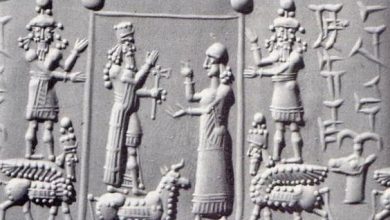In the tapestry of Chinese mythology, four majestic creatures stand out: the Azure Dragon, the Vermilion Bird, the White Tiger, and the Black Tortoise. Collectively known as the Four Symbols (Si Xiang 四象), they have held a profound cultural significance for centuries, representing not just cardinal directions but also seasons, elements, virtues, and even emotions. These divine guardians continue to resonate in art, architecture, and philosophy, reminding us of the interconnectedness between the celestial and terrestrial realms.

The Azure Dragon (Qing Long 青龍):
This majestic serpent, depicted as a sinuous creature with dragon scales and sharp claws, reigns over the East and the spring season. Associated with the element of wood, the Azure Dragon embodies renewal, growth, and yang energy.

Its vibrant green hue symbolizes fertility and abundance, while its powerful nature reflects strength and leadership. In the realm of emotions, the Azure Dragon represents kindness and benevolence.
The Vermilion Bird (Zhu Que 朱雀):
Emblazoned in fiery red, the Vermilion Bird, also known as the Phoenix, presides over the South and the summer season. The element of fire courses through its veins, reflecting passion, transformation, and yin energy.

Its radiant plumage symbolizes the sun and warmth, while its graceful flight embodies freedom and beauty. In the emotional spectrum, the Vermilion Bird represents joy and creativity.
The White Tiger (Bai Hu 白虎):
This imposing creature, with its powerful physique and sharp fangs, reigns over the West and the autumn season. Embodied in the element of metal, the White Tiger signifies strength, justice, and yang energy.

Its snowy fur symbolizes purity and righteousness, while its fierce eyes represent authority and courage. In the emotional realm, the White Tiger represents anger and bravery.
The Black Tortoise (Xuan Wu 玄武):
This enigmatic figure, depicted as a turtle entwined with a snake, presides over the North and the winter season. The element of water governs the Black Tortoise, reflecting wisdom, intuition, and yin energy.

Its dark shell symbolizes the cosmos and the depths of knowledge, while its patient nature represents resilience and perseverance. In the emotional realm, the Black Tortoise represents fear and mystery.
Beyond Cardinal Directions:
The influence of the Four Symbols extends far beyond their association with cardinal directions and seasons. They are also deeply intertwined with the five elements (wood, fire, earth, metal, and water), imbuing them with additional layers of meaning. The Azure Dragon and the Vermilion Bird represent the yang energy of spring and summer, while the White Tiger and the Black Tortoise represent the yin energy of autumn and winter.
Furthermore, each symbol is assigned a specific virtue:
- Azure Dragon: Benevolence (Ren 仁)
- Vermilion Bird: Righteousness (Yi 義)
- White Tiger: Propriety (Li 禮)
- Black Tortoise: Wisdom (Zhi 智)
These virtues are reflected in the creatures’ characteristics and serve as guiding principles for individuals and society.
A Legacy in Art and Architecture:
The Four Symbols have permeated Chinese art and architecture for millennia. They adorn temples, palaces, and traditional buildings, often used as decorative motifs. Their presence serves as a constant reminder of the interconnectedness of the natural world and the cosmos.
In contemporary Chinese culture, the Four Symbols continue to hold a special place. They are featured in modern art and design, appearing in everything from clothing and jewelry to film and video games. Their enduring popularity speaks to the timeless appeal of these mythical creatures and their profound significance in Chinese mythology.
Conclusion:
The Azure Dragon, the Vermilion Bird, the White Tiger, and the Black Tortoise are more than just mythical creatures; they are symbols of profound cultural significance. Their enduring presence in Chinese art, architecture, and philosophy demonstrates their enduring impact on the nation’s history and identity. As we continue to explore their rich mythology, we gain a deeper understanding of the Chinese worldview and the importance of harmony between the celestial and terrestrial realms.




